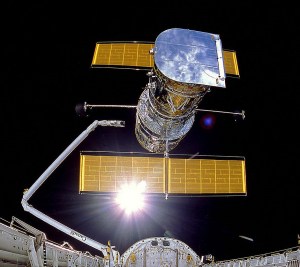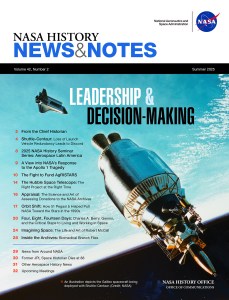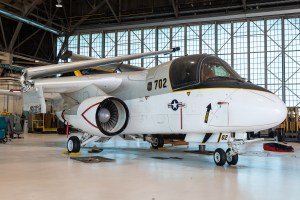On March 3, 1959, the United States launched Pioneer 4 with the goal of photographing the Moon during a close flyby. As part of the International Geophysical Year that ran from July 1, 1957, to Dec. 31, 1958, the United States planned to send five probes to study the Moon. The first three planned to orbit the Moon, while the last two simpler probes planned to photograph it during flybys. After NASA opened for business in October 1958, the new space agency inherited the Pioneer program from the Advanced Research Projects Agency, a branch of the Department of Defense established earlier in 1958 as part of America’s initiative to respond to early Soviet space accomplishments. The Jet Propulsion Laboratory in Pasadena, California, part of the U.S. Army until transferred to NASA in December 1958, built the two Pioneer lunar flyby spacecraft. While the first four missions did not succeed in reaching their target, Pioneer 4 became the first American spacecraft to flyby the Moon and enter solar orbit.
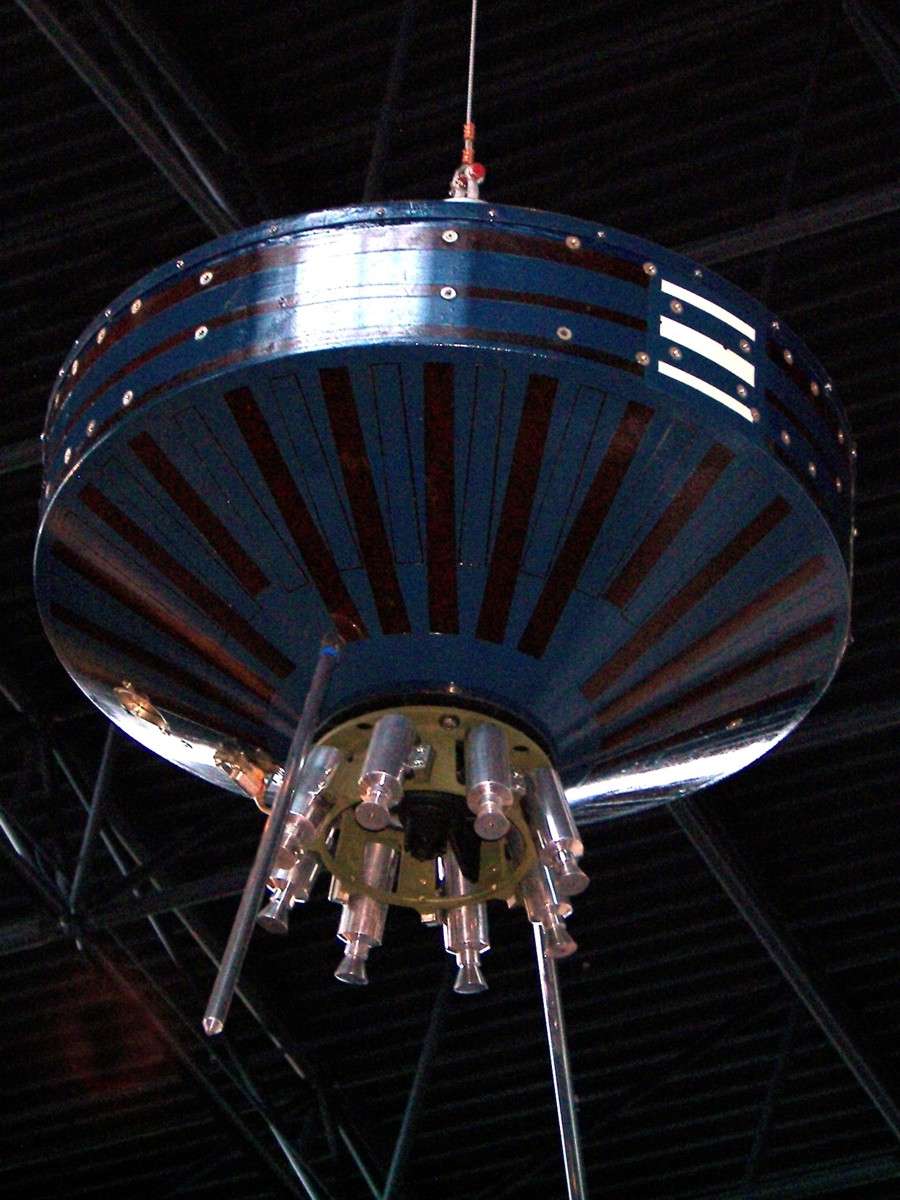
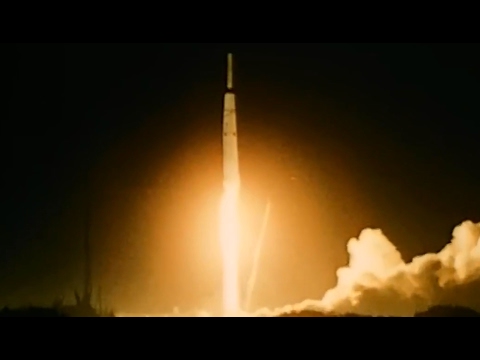
Left: A replica of the Pioneer 1 spacecraft. Image credit: courtesy National Air and Space Museum. Right: Liftoff of Pioneer 1, the first satellite launched by NASA.
The first Pioneer launch attempt on August 17, 1958, ended in failure 77 seconds after liftoff when the Thor-Able booster exploded. Engineers identified and corrected the problem with the rocket and on Oct. 11, Pioneer 1, weighing 84 pounds, thundered off from Cape Canaveral’s Launch Complex 17A. The launch took place just 10 days after NASA officially opened for business. Liftoff seemed to go well, but tracking soon showed that the spacecraft was traveling more slowly than expected and was also off course. Relatively minor errors in the first stage’s performance were compounded by other issues with the second stage, making it clear that Pioneer 1 would not achieve its primary goal of entering orbit around the Moon. The spacecraft did reach a then-record altitude of 70,770 miles about 21 hours after launch before beginning its fall back to Earth. It burned up on reentry over the Pacific Ocean 43 hours after liftoff. The probe’s instruments confirmed the existence of the Van Allen radiation belts discovered by Explorer 1 earlier in the year. The third and final lunar orbiter attempt, Pioneer 2 on November 8, met with less success. The rocket’s first and second stages performed well, but the third stage failed to ignite. Pioneer 2 could not achieve orbital velocity and only reached a peak altitude of 960 miles before falling back to Earth after a brief 42-minute flight.
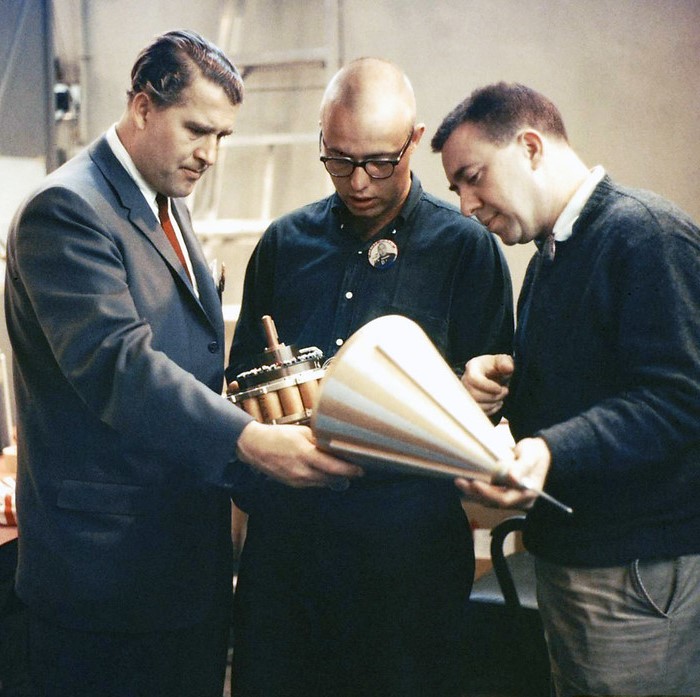
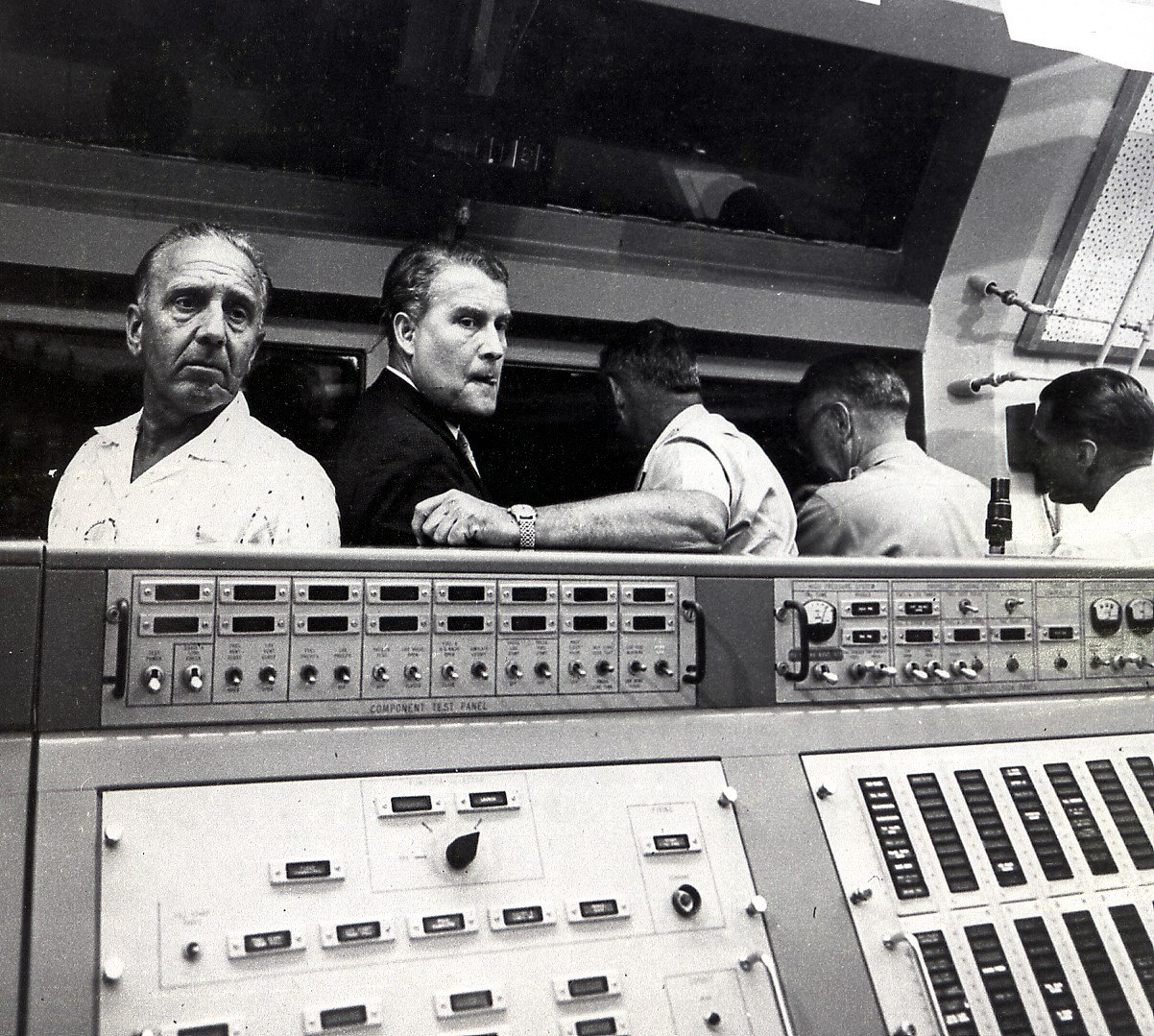
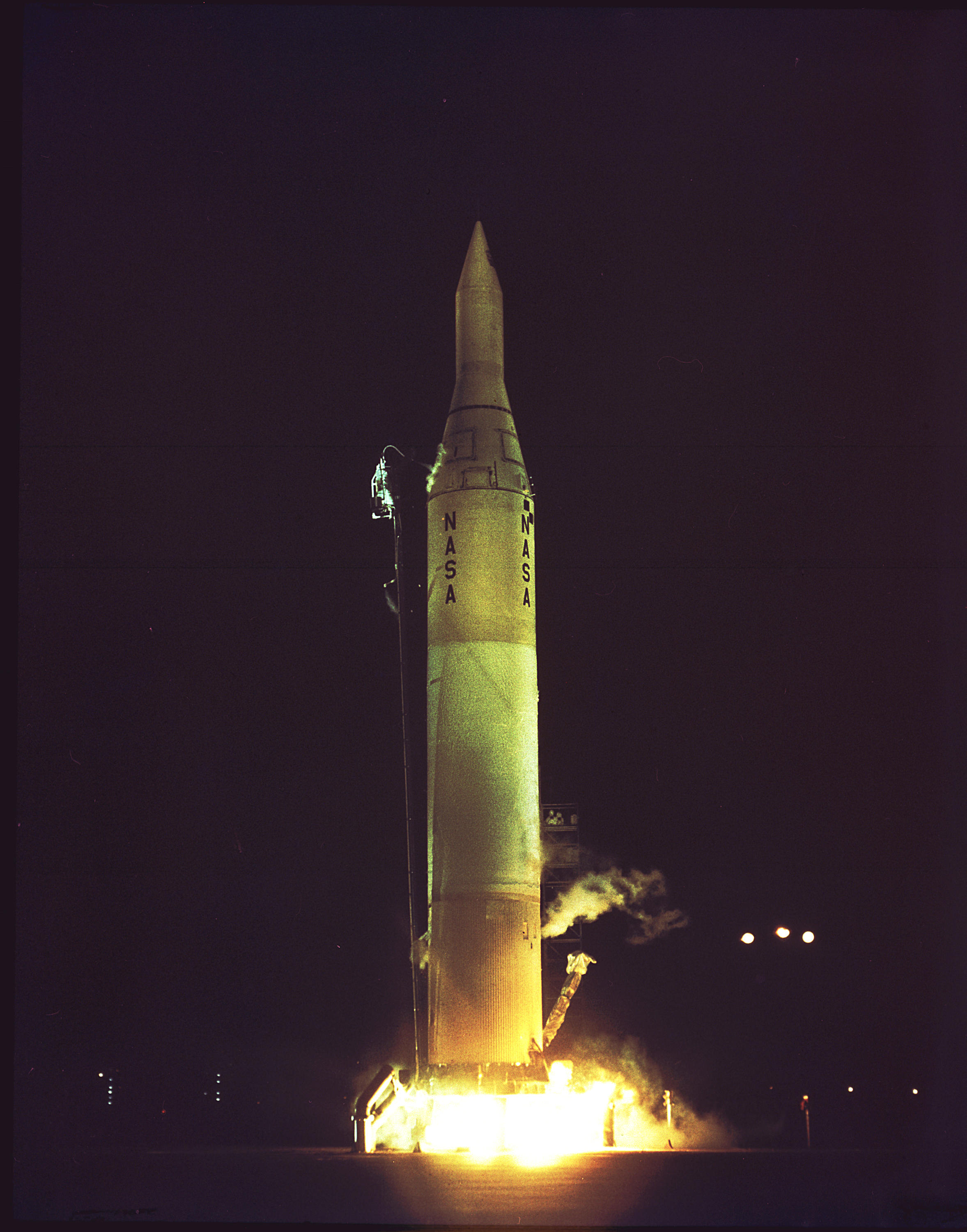
Left: Juno rocket developer Wernher von Braun, left, Pioneer project engineer John R. Casani, and project scientist James A. Van Allen inspect the instruments in the Pioneer 4 spacecraft. Image credit: courtesy LIFE Magazine. Middle: Kurt H. Debus, left, and von Braun in the blockhouse for the Pioneer 4 launch. Right: Launch of Pioneer 4, the first American spacecraft to flyby the Moon and enter solar orbit.
The two lunar flyby missions came next, each carrying a radiation counter and photographic equipment. The 13-pound Pioneer 3 took off on Dec. 6. The Juno-II rocket’s first stage engine cut off early, and the probe could not reach its destination, falling back to Earth 38 hours after launch. Despite this problem, Pioneer 3 returned significant radiation data and discovered a second outer Van Allen belt encircling the Earth. The second attempt on March 3, 1959, met with more success as Pioneer 4 became the first American spacecraft to reach Earth escape velocity. The Juno-II’s second stage burned for an extra few seconds, resulting in Pioneer 4 passing at 36,650 miles of the Moon’s surface 41 hours after launch. At that distance, instead of the planned 5,000 miles, the spacecraft could not achieve its objective of photographing the Moon. Pioneer 4 then went on to become the first American spacecraft to enter solar orbit, a feat the Soviet Luna 1 accomplished two months earlier. Pioneer 4 returned radiation data for 82 hours, out to 409,000 miles, nearly twice the Earth-Moon distance, until its batteries died.
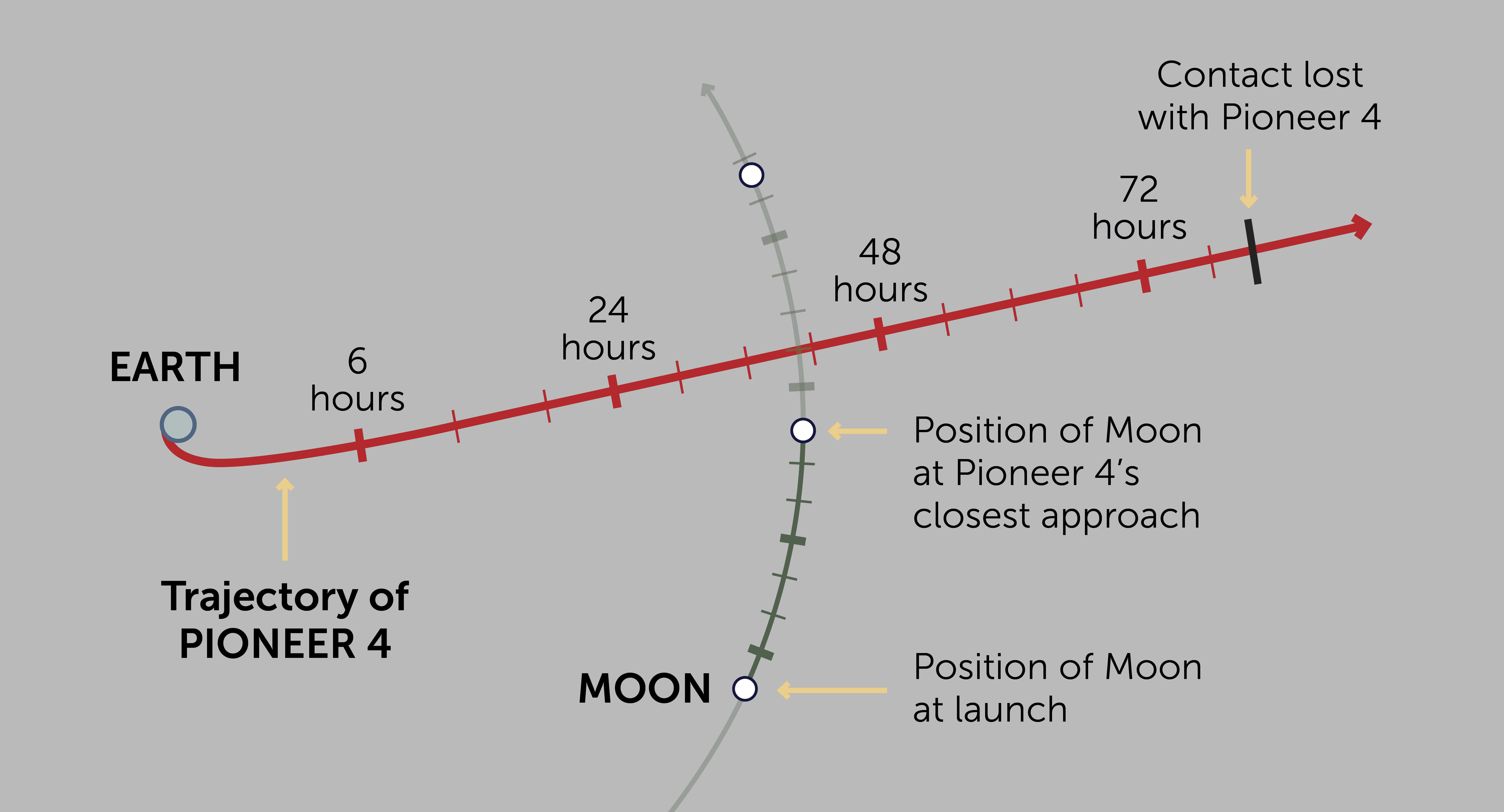
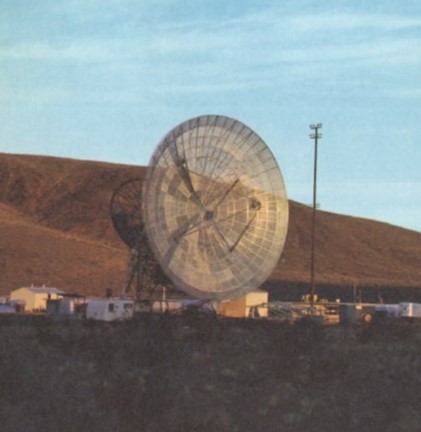
Left: Pioneer 4’s trajectory to the Moon and beyond. Right: The Deep Space Station-11, also known as Pioneer Station, in 1958.
Although these early Pioneer lunar probes met with limited mission success, the program marked the first use of the 26-meter antenna and tracking station at Goldstone, California. This antenna, completed in 1958 and known as Deep Space Station 11 (DSS-11), was the first component of what eventually became the NASA Deep Space Network. Although called Pioneer Station, DSS-11 not only followed these early spacecraft, starting with Pioneer 3, but later monitored the Ranger, Surveyor, and Lunar Orbiter robotic precursor missions and tracked the Apollo 11 Lunar Module Eagle to the Moon’s surface on July 20, 1969, and the other Apollo lunar missions as well. It also tracked Mariner, Viking, and Voyager missions to the planets before its decommissioning in 1978.
Watch a video about Pioneer 4: https://youtu.be/mM4U78sFYpQ





























